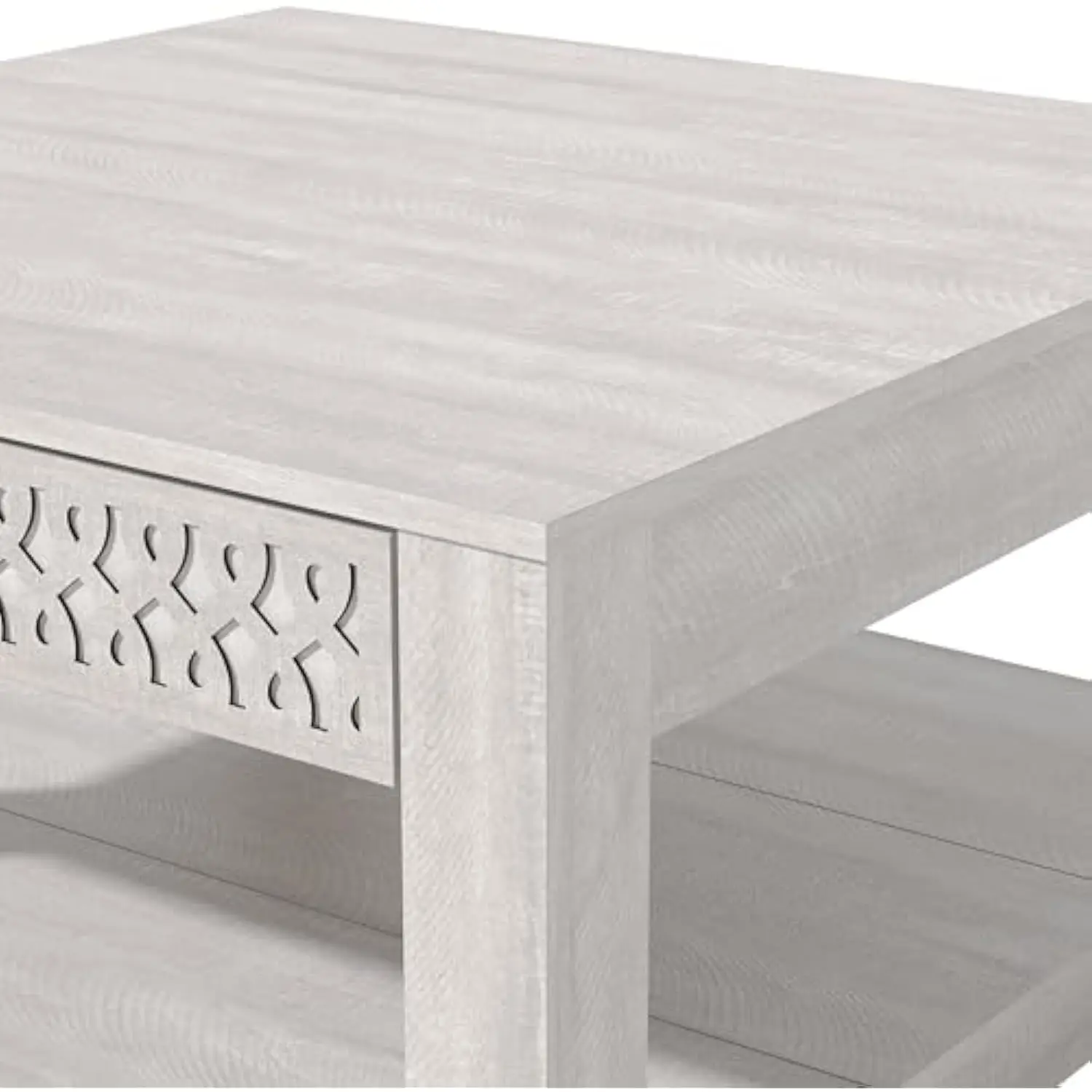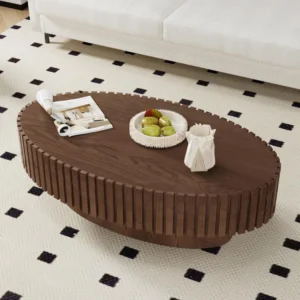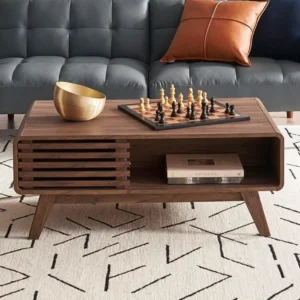1. Why Your Coffee Table’s Wood Type Makes All the Difference
In any living room, the coffee table serves as both a functional necessity and a design centerpiece. It anchors your seating arrangement while providing a surface for drinks, books, and décor. But have you considered how profoundly the wood type affects nearly every aspect of your coffee table experience?
The wood you select determines not just how your table looks today, but how it will look years from now. Different wood species age uniquely – some developing rich patinas while others maintain consistent appearance. According to furniture industry data, high-quality solid wood tables can last 25+ years with proper care, while lower-quality options often need replacement within 5-7 years.
Your wood choice impacts:
– Visual warmth and character in your living space
– Ability to withstand daily use and accidents
– Long-term value and enjoyment of your purchase
– Compatibility with your lifestyle and maintenance preferences
Understanding different mid-century coffee table designs helps you make more informed decisions about which material will best serve your needs while complementing your aesthetic preferences.
When selecting from various solid wood coffee tables, knowing the characteristics of each wood type ensures you’ll find one that aligns with both your practical requirements and design vision.
2. Hardwoods vs. Softwoods: Understanding the Fundamental Difference
Before diving into specific wood types, it’s essential to understand the fundamental distinction between hardwoods and softwoods. Despite what their names suggest, the difference isn’t necessarily about hardness.
Botanical Definition: Hardwoods come from angiosperm trees (those that produce seeds with some covering – like acorns or fruit). These are typically deciduous trees that lose their leaves annually. Softwoods come from gymnosperm trees (those with exposed seeds, usually in cones) – typically evergreen conifers.
Practical Differences: Generally, hardwoods have a more complex cell structure that contributes to greater density, though exceptions exist. This density typically results in more durable furniture, which is why hardwoods dominate the quality coffee table market.
| Characteristic | Hardwoods | Softwoods |
|---|---|---|
| Botanical Origin | Angiosperms (deciduous) | Gymnosperms (conifers) |
| Density Range | Medium to High | Low to Medium |
| Typical Price | $$ – $$$$ | $ – $$ |
| Coffee Table Use | Premium, long-lasting pieces | Budget options, casual styles |
| Common Examples | Oak, Maple, Walnut | Pine, Cedar, Fir |
Softwoods can make perfectly functional coffee tables, particularly for budget-conscious shoppers or casual spaces like vacation homes. They’re generally easier to work with and less expensive. However, they typically dent and scratch more easily than hardwoods.
Understanding the differences between hardwood vs. softwood coffee tables will help you make better decisions about durability expectations and appropriate applications for different wood types.
3. Premium Hardwoods for Coffee Tables: Detailed Analysis
When investing in a quality coffee table that will serve as a centerpiece for years to come, premium hardwoods offer the best combination of durability and beauty. Knowing how to identify real wood coffee tables ensures you’re getting authentic materials with natural character rather than imitations.
3.1 Oak: The Reliable Classic
Oak stands as one of the most popular woods for furniture due to its exceptional strength and distinctive grain pattern. Two main varieties are commonly used in coffee tables:
Red Oak features a pinkish undertone with prominent, open grain patterns. It typically has a Janka hardness rating of 1,290, meaning it can withstand significant daily use without showing excessive wear.
White Oak displays a more yellowish-brown color with tighter, straighter grain patterns. With a Janka hardness rating of 1,360, it’s slightly more durable than red oak and has better resistance to moisture.
Pros for coffee tables:
– Exceptional durability for high-traffic homes
– Classic appearance that complements many design styles
– Readily available, making it more affordable than some exotic hardwoods
– Takes stains beautifully, offering versatility in finishing
Cons to consider:
– Heavier than many other woods (challenging to move)
– Can show water rings if not properly protected
– Some may find the prominent grain too “busy” for minimalist designs
Oak coffee tables excel in traditional, craftsman, and rustic interior designs where their natural character and warmth enhance the aesthetic.
3.2 Maple: The Versatile Performer
Maple offers a clean, uniform appearance that works wonderfully in contemporary spaces. Its light, creamy color brightens rooms while providing excellent durability.
Hard Maple (Sugar Maple) features a tight, uniform grain with minimal pattern and a Janka hardness rating of 1,450, making it one of the hardest domestic woods available.
Soft Maple (various species) is actually still quite hard with a Janka rating around 950-1,000, but costs less than hard maple.
Pros for coffee tables:
– Exceptional resistance to abrasion and daily wear
– Clean, contemporary appearance with minimal grain
– Takes paint extremely well for colored finishes
– Highly stable with minimal movement over time
Cons to consider:
– Can be difficult to stain evenly due to dense structure
– Tends to yellow slightly with age and UV exposure
– Less dramatic character than woods with pronounced grain
Maple particularly shines in contemporary, Scandinavian, and minimalist design schemes. It also makes an excellent canvas for specialty variations like birdseye maple, which features distinctive small, circular patterns throughout the wood.
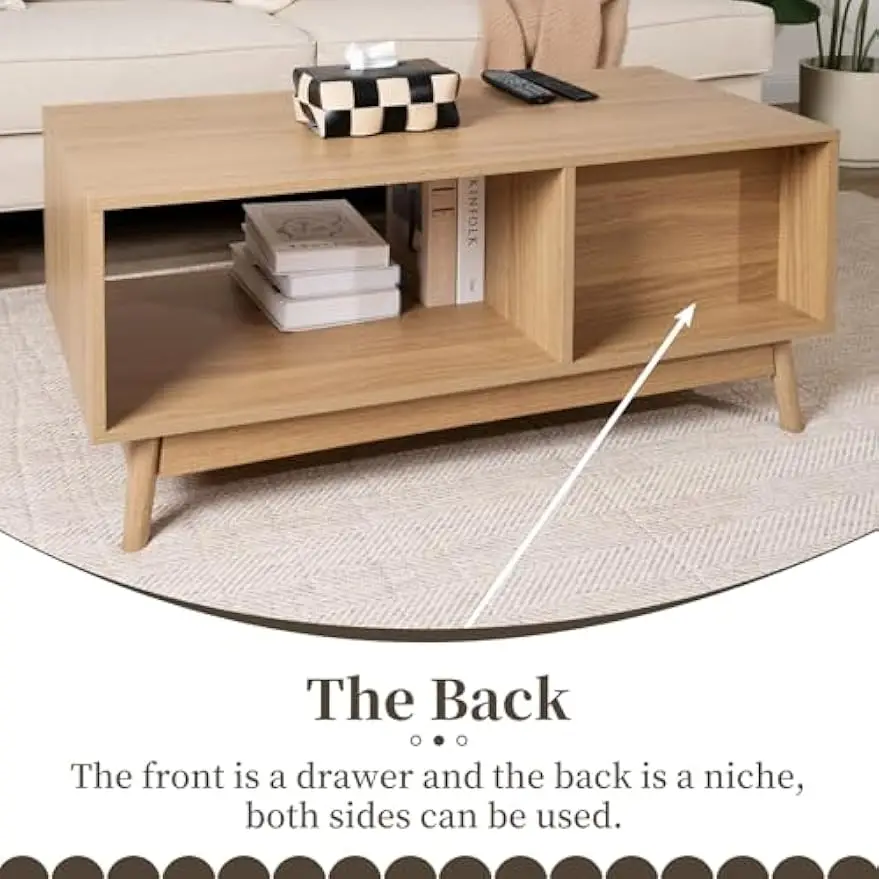
3.3 Walnut: The Sophisticated Choice
American Black Walnut delivers a sophisticated, luxurious appearance with its rich chocolate-brown color and straight to gently wavy grain pattern. With a Janka hardness of 1,010, it balances durability with a slight softness that makes it comfortable to touch.
Pros for coffee tables:
– Exceptionally beautiful natural color requires minimal treatment
– Develops a rich patina over time that enhances its appearance
– Works beautifully with both traditional and modern designs
– Excellent workability allows for refined details and edges
Cons to consider:
– Commands premium prices due to limited supply
– Lighter in weight than some hardwoods, potentially more susceptible to dents
– Can fade to a lighter brown tone with significant sun exposure
Walnut is particularly prized for mid-century modern walnut coffee tables, where its rich color and clean lines create the perfect blend of warmth and sophistication. Its natural elegance makes it a favorite for high-end furniture where making a statement matters.
3.4 Cherry: The Elegant Beauty
American Cherry offers a distinctive reddish-brown color that dramatically deepens and darkens with age, developing a coveted patina. With a Janka hardness rating of 950, cherry is moderately hard—durable enough for everyday use while being relatively easy to work with.
Pros for coffee tables:
– Develops a uniquely beautiful patina that improves with age
– Straight, fine grain creates a smooth, refined appearance
– Takes finish exceptionally well for a glowing surface
– Traditional elegance that works in formal and casual settings
Cons to consider:
– More susceptible to denting than harder woods
– Significant color change over time (up to several shades darker)
– Sensitive to uneven UV exposure, which can cause uneven aging
Cherry coffee tables particularly complement traditional, formal, and Federal-style interiors. Their natural warmth and elegance create timeless appeal that actually improves as the piece ages—a rare quality in furniture.
3.5 Mahogany: The Timeless Investment
Genuine mahogany represents one of the most prized furniture woods globally, though sustainability concerns have limited its availability. With its straight to slightly interlocked grain and reddish-brown color, mahogany offers impressive stability and a refined appearance. Its Janka hardness rating of approximately 800-900 places it in the medium-hard category.
Pros for coffee tables:
– Exceptional dimensional stability with minimal warping
– Naturally resistant to rot and decay
– Ages beautifully with a rich, deep color development
– Historic association with fine furniture craftsmanship
Cons to consider:
– True mahogany commands premium prices and may be difficult to source responsibly
– Many “mahogany-like” substitutes exist that don’t offer the same characteristics
– Requires careful sourcing to ensure sustainability and authenticity
Mahogany coffee tables excel in traditional, colonial, and classic design schemes. Their timeless elegance works particularly well in formal living rooms and spaces designed for entertaining.
4. Practical Alternatives: Other Solid Woods for Coffee Tables
While premium hardwoods offer exceptional qualities, several alternative wood species provide excellent value while still delivering solid performance for coffee tables.
Ash features a light color similar to oak but with a straighter grain pattern. With a Janka rating of 1,320, it offers excellent durability at a typically lower price point than oak or maple. Its light color works well in contemporary and Scandinavian-inspired spaces.
Pine represents the most common softwood used for furniture. With a Janka rating of 420-870 (depending on species), it’s significantly softer than hardwoods but offers rustic charm at an accessible price point. It dents easily but can be appropriate for casual spaces with a distressed or country aesthetic.
Acacia has gained popularity for its distinctive grain patterns and rich color variation. With a Janka rating around 1,500, it offers impressive hardness and durability. Its varied appearance works well in eclectic or natural design schemes.
Birch provides a light, clean appearance similar to maple but at a lower price point. With a Janka rating around 1,260, it offers good durability for daily use. Its fine, straight grain accepts stain well, making it versatile for various design styles.
Beech offers a pale cream to pinkish-brown color with fine, straight grain. With a Janka rating of approximately 1,300, it provides excellent durability. Its consistent appearance works well in contemporary and Scandinavian designs.
| Wood Type | Janka Hardness | Relative Price | Best Design Match | Notable Characteristic |
|---|---|---|---|---|
| Ash | 1,320 | $$ | Contemporary | Similar to oak with straighter grain |
| Pine | 420-870 | $ | Rustic, Casual | Knotty character, easily distressed |
| Acacia | ~1,500 | $$ | Eclectic, Natural | Dramatic grain variation |
| Birch | 1,260 | $$ | Contemporary | Clean appearance, takes stain well |
| Beech | 1,300 | $$ | Modern, Scandinavian | Consistent color and grain |
Knowing how to properly style a black mid-century coffee table or other designs helps you select the right wood type to complement your overall interior aesthetic.
5. How to Choose the Right Solid Wood for Your Coffee Table
Selecting the ideal wood for your coffee table requires balancing several factors to match your specific needs. Consider these key elements when making your decision:
Durability Requirements
- High-activity households (families with children, pets) benefit from harder woods like oak, maple, or acacia
- Adult-only or low-traffic spaces can use moderately hard woods like cherry or walnut
- Consider the Janka hardness rating as a general guide to dent and scratch resistance
Aesthetic Compatibility
- Match wood tone to your design vision (light woods for airy spaces, dark woods for richness)
- Consider grain pattern intensity (pronounced for character, subtle for minimalism)
- Think about aging characteristics, especially color changes over time
Maintenance Willingness
- Some woods (like oak) hide minor damage better than others
- Softer woods require more careful use and frequent maintenance
- Consider your tolerance for developing patina versus maintaining original appearance
Budget Considerations
- Premium hardwoods represent long-term investments
- Consider the total cost of ownership (initial price versus longevity)
- Explore alternative species that mimic premium looks at lower price points
Understanding essential features of solid wood coffee tables helps you prioritize the characteristics that matter most for your specific situation and lifestyle.
6. Wood Comparison: At-a-Glance Reference Guide
This comprehensive comparison will help you quickly evaluate different wood options based on their key characteristics:
| Wood Type | Janka Hardness | Color Range | Grain Pattern | Durability | Relative Cost | Maintenance Level | Best Design Styles |
|---|---|---|---|---|---|---|---|
| Oak | 1,290-1,360 | Light tan to medium brown | Prominent, open grain | High | $$ | Low-Medium | Traditional, Craftsman, Rustic |
| Maple | 950-1,450 | Creamy white to light amber | Fine, subtle grain | Very High | $$$ | Medium | Contemporary, Scandinavian, Minimalist |
| Walnut | 1,010 | Medium to dark chocolate brown | Straight to wavy grain | Medium-High | $$$$ | Medium | Mid-Century Modern, Luxury Contemporary |
| Cherry | 950 | Light reddish-brown darkening to medium mahogany | Straight, fine grain | Medium | $$$$ | Medium-High | Traditional, Formal, Federal |
| Mahogany | 800-900 | Reddish-brown | Straight to interlocked | Medium-High | $$$$ | Medium | Classic, Colonial, Formal |
| Ash | 1,320 | Light tan to medium brown | Straight, pronounced | High | $$ | Low-Medium | Contemporary, Traditional |
| Pine | 420-870 | Pale yellow to light tan | Knotty, casual | Low-Medium | $ | High | Rustic, Country, Casual |
| Acacia | ~1,500 | Golden brown to dark brown | Variable, often dramatic | High | $$ | Medium | Eclectic, Natural, Global |
| Teak | 1,000 | Golden brown aging to silver-gray | Straight, medium grain | Very High | $$$$ | Low | Mid-Century, Scandinavian |
Our collection of mid-century modern teak coffee tables showcases how this exceptionally durable wood with natural oils creates furniture that withstands decades of use while developing a beautiful patina.
7. Finishes and Treatments: Enhancing Your Wood Coffee Table
The finish applied to your solid wood coffee table significantly impacts both its appearance and performance. Understanding common wood finishes for coffee tables helps you select the right protection for your specific needs.
Polyurethane creates a durable, water-resistant plastic-like layer over the wood. Available in matte to high-gloss sheens, it offers excellent protection but can look somewhat artificial compared to other options.
Oil-Based Varnish penetrates the wood while building a protective film on the surface. It enhances grain beauty and offers good protection while requiring occasional reapplication.
Pure Oil Finishes (like tung or linseed) penetrate the wood without forming a film. They showcase natural grain and texture while allowing easy spot repairs but require more frequent maintenance.
Wax provides a soft luster and feel but minimal protection. It’s often used over other finishes for additional sheen or as a traditional finish for antique-style pieces.
Lacquer creates a hard, clear finish that dries quickly and resists water. It highlights wood grain beautifully but can be more difficult to repair if damaged.
Water-Based Finishes offer low toxicity and easy cleanup while providing good protection. They tend to look slightly more artificial than oil-based options but emit fewer VOCs (volatile organic compounds).
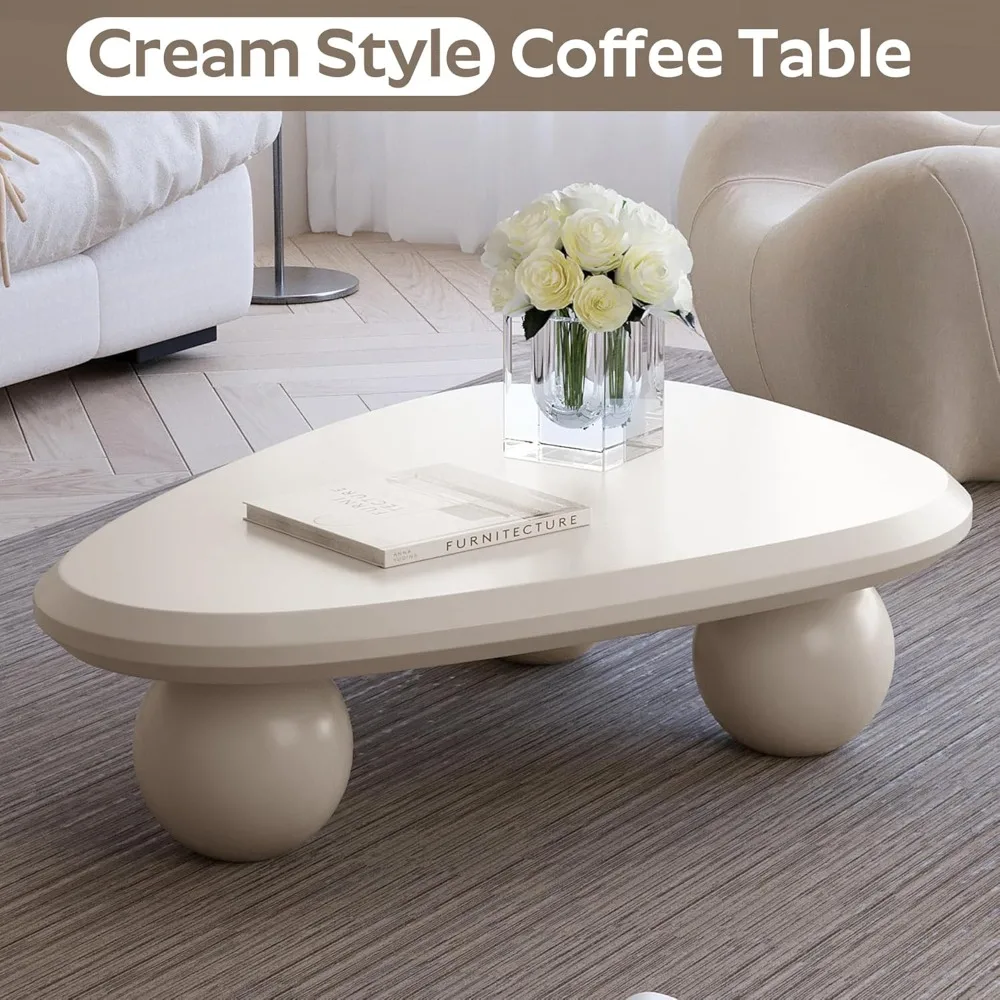
When selecting a finish, consider:
– Your desired level of protection versus natural wood feel
– Maintenance requirements and ease of repair
– How the finish will enhance or alter the wood’s natural color
– Environmental and health considerations regarding VOCs
8. Identifying Quality: What to Look for When Purchasing
To ensure you’re getting a genuinely high-quality solid wood coffee table, look for these indicators:
Solid Wood Verification:
– Check the end grain on exposed edges—solid wood shows consistent grain patterns
– Look for natural color variation throughout the piece
– Examine weight—solid wood is typically heavier than engineered alternatives
– Ask about construction methods and wood species used
Quality Construction Indicators:
– Smooth, even joints with tight seams
– Traditional joinery methods like dovetail, mortise and tenon, or finger joints
– Consistent finish application without drips, bubbles, or uneven coloration
– Smooth drawer operation (if applicable) without sticking or excessive play
Questions to Ask Retailers:
– Is this solid wood throughout, or are any components made from other materials?
– What type of wood is used, and where was it sourced?
– What joinery methods were used in construction?
– What type of finish was applied, and what maintenance is recommended?
Red Flags to Watch For:
– Extremely light weight for the wood type claimed
– Perfect uniformity in color and grain pattern
– Edges or undersides with visible different materials
– Vague descriptions like “wood finish” instead of naming the actual material
Mid-Century Modern Solid Wood Coffee Tables, Mid-Century Modern Teak Coffee Tables
$879.95 Select options This product has multiple variants. The options may be chosen on the product pageMid-Century Modern Danish Coffee Tables, Mid-Century Modern Oval Coffee Tables, Mid-Century Modern Solid Wood Coffee Tables
$390.05 Select options This product has multiple variants. The options may be chosen on the product pageMid-Century Modern Glass Top Coffee Tables, Mid-Century Modern Glass Top Side & End Tables
$460.58 Select options This product has multiple variants. The options may be chosen on the product pageMid-Century Modern Glass Top Coffee Tables, Mid-Century Modern Vintage Coffee Tables, Mid-Century Modern Vintage Side & End Tables
$725.36 Select options This product has multiple variants. The options may be chosen on the product pageMid-Century Modern Oval Coffee Tables, Mid-Century Modern Solid Wood Coffee Tables
$679.56 Select options This product has multiple variants. The options may be chosen on the product pageMid-Century Modern Solid Wood Coffee Tables, Mid-Century Modern Walnut Coffee Tables
$501.53 Select options This product has multiple variants. The options may be chosen on the product page
Quality craftsmanship in a solid wood coffee table isn’t just about aesthetics—it directly impacts durability and long-term satisfaction with your purchase.
9. Care and Maintenance: Preserving Your Coffee Table’s Beauty
Proper care ensures your solid wood coffee table remains beautiful for generations:
Daily Care Basics:
– Use coasters for drinks to prevent water rings and heat damage
– Dust regularly with a soft, lint-free cloth
– Clean spills immediately, wiping in the direction of the wood grain
– Avoid placing hot items directly on the surface
Cleaning Products:
– Use products specifically formulated for the finish on your table
– For most finishes, a mixture of mild soap and water works well
– Avoid silicone-based products which can build up over time
– Never use abrasive cleaners or scouring pads
Addressing Common Issues:
– For minor scratches in oil-finished woods, rub with fine steel wool and reapply oil
– Remove water rings with a mixture of equal parts vinegar and olive oil
– Address deeper scratches with wood-colored wax sticks or touch-up markers
– For significant damage, consult a professional furniture restorer
Periodic Maintenance:
– Apply furniture polish or conditioner appropriate for your finish type quarterly
– Reapply oil to oil-finished pieces every 6-12 months
– Check for loose joints annually and address immediately
– Keep wood out of direct sunlight to prevent uneven fading
Our collection of vintage mid-century coffee tables often features patina developed through decades of proper care, showing how well-maintained solid wood becomes more beautiful with age.
10. Matching Wood Types to Home Design Styles
Selecting a wood type that complements your interior design creates visual harmony throughout your space:
Mid-Century Modern:
– Walnut: The quintessential mid-century wood with rich, warm tones
– Teak: Offers golden tones that age beautifully, iconic in Danish designs
– Oak: Particularly white oak for lighter, airy mid-century spaces
– Cherry: For warmer interpretations of mid-century design
Farmhouse/Rustic:
– Pine: Knotty character adds casual charm
– Oak: Particularly with visible grain and distressed finishes
– Reclaimed woods: Tell a story while adding authentic character
– Maple: For painted white or colored farmhouse pieces
Contemporary/Minimalist:
– Maple: Clean appearance with minimal grain distraction
– Ash: Light color with straight grain patterns
– Beech: Consistent appearance works well in minimal settings
– Walnut: For darker contemporary schemes that need warmth
Traditional/Classic:
– Mahogany: The traditional choice for formal spaces
– Cherry: Develops rich patina perfect for traditional settings
– Oak: Quarter-sawn oak for Arts & Crafts or Mission styles
– Walnut: Adds sophistication to traditional spaces
Industrial:
– Oak: Particularly when paired with metal elements
– Pine: Offers rustic contrast to industrial metal components
– Reclaimed woods: Authentic aged appearance complements industrial aesthetic
Understanding which styles go well with mid-century modern helps create cohesive spaces when incorporating wood coffee tables into your existing décor.
11. Is Solid Wood Always the Best Choice? Understanding Alternatives
While solid wood offers exceptional qualities, alternatives may better suit certain situations:
Engineered Wood Options:
– Veneer over plywood: Provides stable surfaces less prone to warping
– Veneer over MDF: Offers consistent appearance at lower price points
– Benefits: More stable in varying humidity, often more affordable
– Limitations: Cannot be refinished multiple times, may show damage differently
Mixed Material Designs:
– Wood and metal combinations offer industrial or contemporary flair
– Wood frames with glass tops protect wood while showcasing its beauty
– Wood with stone or concrete create textural interest and functional benefits
Considerations for Choosing Alternatives:
– Budget constraints might make quality veneers preferable to lower-grade solid wood
– Extremely dry or humid environments might benefit from engineered stability
– Design preferences for mixed materials might better suit certain aesthetics
– Specific functional needs (like glass for easy cleaning) might guide material choice
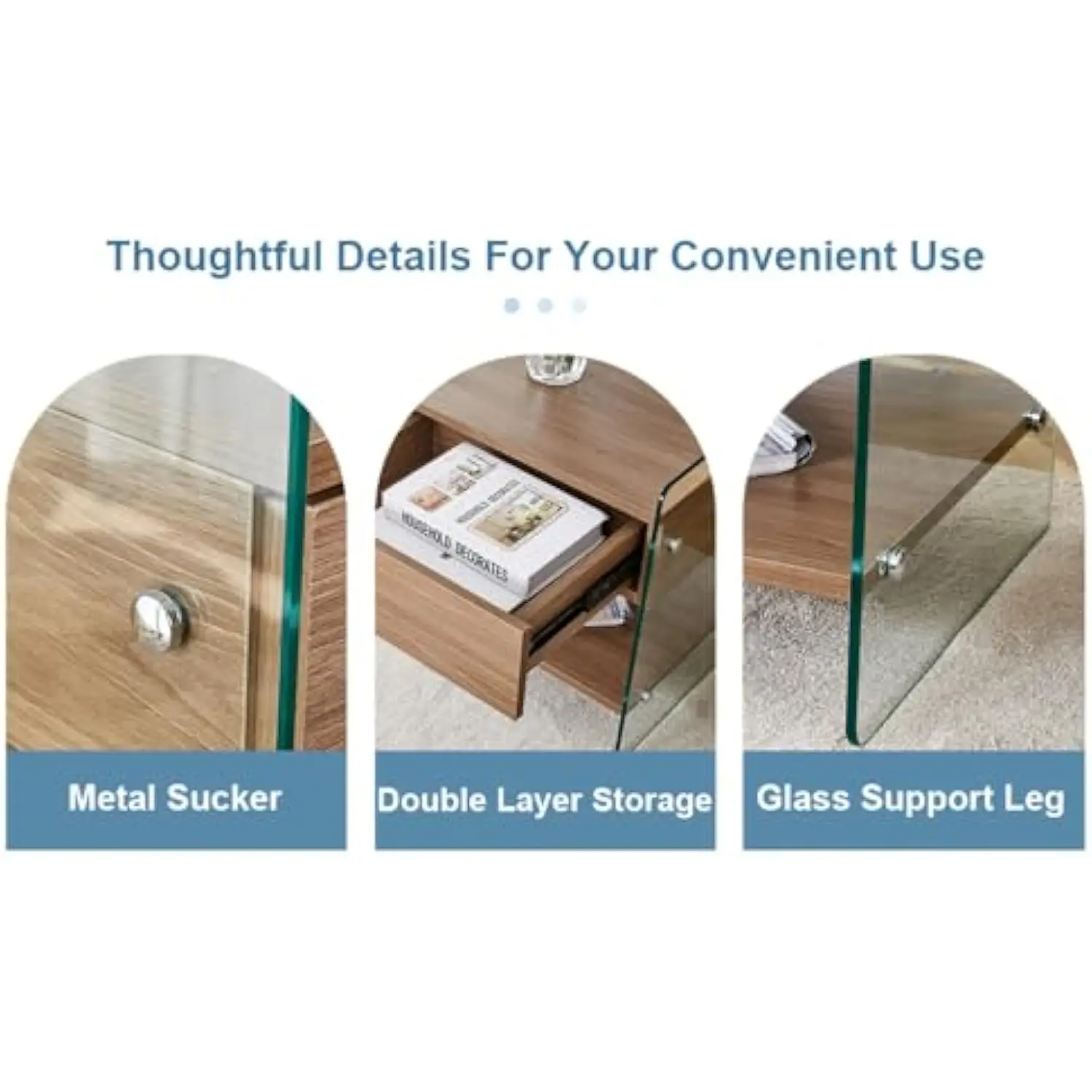
For spaces that benefit from transparency and visual lightness, our glass-top coffee tables pair wooden bases with glass surfaces, creating pieces that showcase wood craftsmanship while offering practical advantages.
12. Does Your Wood Coffee Table Need Seasonal Care?
Wood remains a living material even after becoming furniture, responding to environmental changes throughout the year:
Humidity Considerations:
– Wood expands in higher humidity and contracts in drier conditions
– Ideal indoor humidity range for wood furniture: 35-45%
– Use humidifiers in winter when heating systems dry air
– Consider dehumidifiers in summer if humidity rises above 50%
Temperature Factors:
– Avoid placing wood furniture near heating vents, radiators, or fireplaces
– Keep wood away from air conditioning vents where temperature fluctuates dramatically
– Maintain consistent indoor temperature when possible
Seasonal Maintenance Checklist:
– Spring: Deep clean and assess any winter damage
– Summer: Monitor for increased humidity effects and protect from direct sunlight
– Fall: Apply conditioning treatments before heating season begins
– Winter: Watch for drying effects from heating systems
Addressing Seasonal Issues:
– If doors or drawers stick in summer, check humidity levels
– If joints loosen in winter, it may indicate excessive dryness
– Seasonal shifts in appearance are normal and generally temporary
– Different wood species respond differently—denser woods typically move less
With proper care adjusted for seasonal changes, your solid wood coffee table will remain beautiful and functional for generations, developing character and patina that enhance its appeal over time.

